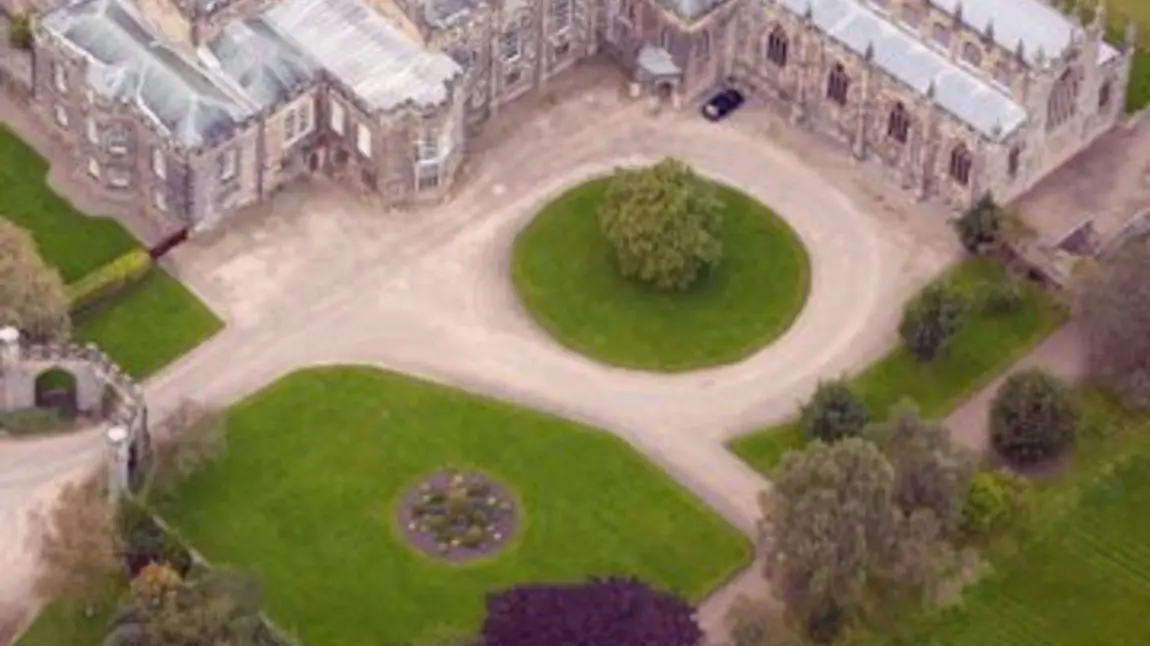Archaeologists dig up Auckland Castle's past

A team from nearby Durham University is currently digging in the castle’s grounds before work to turn the historic site into a world class visitor attraction and tourist destination gets under way.
The Auckland Castle Trust which now runs what was the palace of the Bishops of Durham before its purchase from the Church of England in 2012 with support from millionaire philanthropist Jonathan Ruffer, is keen to shed new light on the religious centre’s 900 years of history and beyond.
And after just 10 days of digging at the complex of medieval buildings and parkland in Bishop Auckland, a fascinating but enigmatic window into its often convoluted past is emerging.
The shattered remains of a building have been laid bare in a trench on an undulating grassed area close to the castle’s Scotland Wing - so-called because that is where prisoners’ from north of the Border were once housed – alongside evidence of burning.
But inexplicably while the two finds sit together neither is historically linked. The rubble, which includes finely worked stone, is up to 1.5m (4ft 11in) deep in places and lies over what is a substantial layer of burnt sediment and ash.
The unexpected discovery has astonished Auckland Castle’s head curator, Dr Chris Ferguson, who says the vast volume of debris is a puzzle and could suggest a “very dramatic end” to what looks to be a substantial structure or range of buildings once directly associated with the main palace.
Both the edifice and exact date and nature of its devastation are unknown, but Chris believes it could either be linked to the tumult surrounding the English Civil War or perhaps improvements undertaken in Georgian times. “We know that Sir Arthur Hazlerigg, who was one of the five MPs who led the rebellion against Charles I in 1642, was appointed Oliver Cromwell’s general in the North East.
“In 1650 he bought Auckland Castle after the then Bishop of Durham, Thomas Morton, had fled at the height of the civil war. Hazlerigg seems to have wanted to turn the castle into his own palace in the North. We know he set about what was later described as the ‘ravenous sacrilege’ of the building and that he proceeded to blow up the 350 year old chapel with gunpowder with the intention of reusing the stone in a new mansion. There is great argument as to how far Hazlerigg got in building this mansion, which is believed to have been on the grassed area in front of where the chapel is today.
“Following the Restoration the bishops returned to Auckland Castle and we also know that Hazlerigg’s house was dismantled and the stone used to build the east facing grand chapel we have now. It could be that the rubble is part of Hazlerigg’s redesign, and if gunpowder was indeed used then that could account for the astounding amount of wreckage that’s been found. We knew there had been buildings in this area around the Scotland Wing, but didn’t know if anything remained. We had hoped to find evidence of a tower but instead we have been left with something of a mystery, especially as we have no idea what the burning is associated with.”
There are 25 trenches in total around the Scotland Wing, in the walled garden and by the clock tower. The archaeologists expect to be at the castle for another 10-14 days.
The dig is being funded as part of a wider Heritage Lottery Fund (HLF) supported project and is the first step in securing an additional £9m from the organisation. This will be used to push forward plans for the transformation of Auckland Castle into a major heritage site and visitor destination of regional, national and international importance attracting in excess of 150,000 tourists a year by 2018.
In total the Auckland Castle Trust’s vision for the future of the site famed not just as the former residence of the Prince Bishops of Durham but for its many works of art, will cost £50m.
The palace is home to a series of astonishing full-length paintings of Jacob and his 12 sons by the Spanish Baroque artist Francisco Zurbaran – regarded as among the most significant treasures of European religious art.
Further information
Jane Hall, Auckland Castle on 0191 296 0498, email: smartcookiemedia@gmail.com.